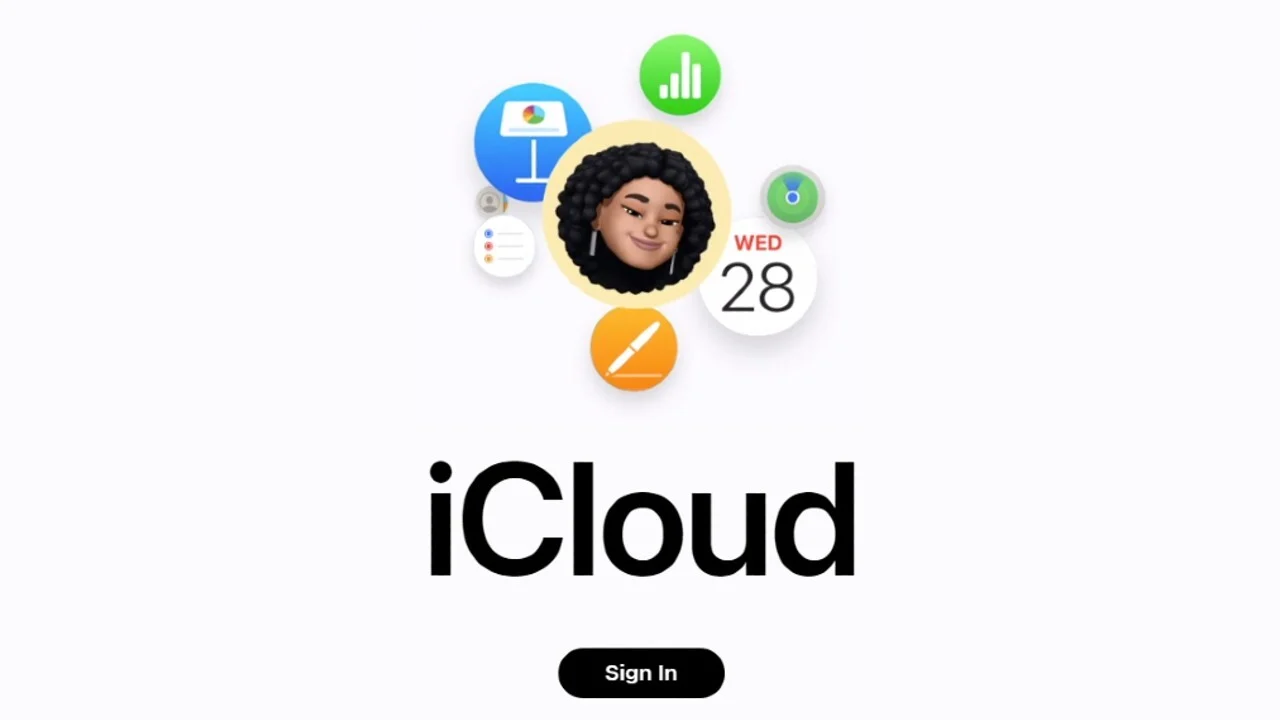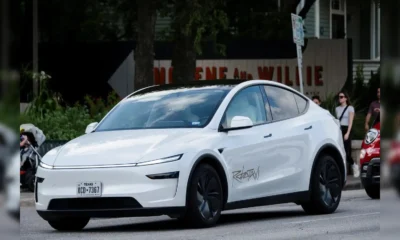Technology
The world’s most powerful rocket is ready for its next test but experts warn it could end in disaster
SpaceX’s Starship prepares for Flight 10 after a year of fiery failures debris controversies and global scrutiny.

The most powerful rocket system ever built is about to attempt its most crucial test yet — but many experts believe the stakes have never been higher. SpaceX, founded by billionaire entrepreneur Elon Musk, has confirmed that its Starship megarocket could launch as early as Sunday evening, carrying out an ambitious hour-long flight from the company’s South Texas base.

A webcast of the test will begin roughly 30 minutes before liftoff. If successful, Flight 10 will prove that SpaceX’s bold “fail fast, fix fast” approach can survive a string of catastrophic explosions that have left regulators, governments, and even allies deeply concerned.
A rocky year for Starship
Since its debut in January 2025, the current Starship generation has struggled. One test vehicle exploded over the islands east of Florida, scattering debris on Turks and Caicos roads and Bahamian beaches. Another spun out of control in May before crashing into the Indian Ocean.
Then in June, a Starship prototype erupted during ground testing in Texas, showering SpaceX’s own infrastructure with shrapnel. These incidents have drawn criticism from governments worldwide. The Mexican government even threatened legal action over debris on its shores, while the UK government said it is working with Washington to protect its overseas territories.
Table of Contents
Why this test matters
Despite the setbacks, the Federal Aviation Administration (FAA) recently closed its investigation into the May failure and granted SpaceX approval to fly again. The company says it has corrected the nose-cone pressure issues that doomed the last flight.
If all goes as planned, Sunday’s mission will see the Super Heavy booster splash down off the Texas coast while the Starship spacecraft continues into orbit, deploying dummy satellites and attempting a crucial engine relight in space.
Former NASA astronaut and SpaceX consultant Garrett Reisman offered a blunt assessment:
“It could end up never working, or it could revolutionize our entire future in space — and geopolitics.”

Bigger ambitions ahead
Elon Musk has already teased larger, more powerful versions of Starship that could eclipse even NASA’s Apollo-era Saturn V rockets. The U.S. is betting big on this technology: NASA has a $2.9 billion contract with SpaceX to use Starship for its planned 2027 lunar mission, while Musk dreams of sending a vehicle to Mars by 2026.
In May, the FAA also expanded SpaceX’s license to allow up to 25 Starship launches per year from Texas. And earlier this month, Donald Trump signed an executive order cutting regulatory barriers for private-sector space operations, despite his public fallout with Musk just weeks earlier.
High risk, high reward
Critics argue that SpaceX is moving too fast, risking public safety and international relations. Supporters counter that the company’s rapid iterative development philosophy is exactly why it has become a leader in spaceflight.
“Every lesson, even from fiery mishaps, goes directly into the next design,” SpaceX said in its August 15 update. And history backs this up: while its Falcon 9 rockets suffered early failures, they now boast one of the safest records in human spaceflight.

If Starship eventually works, it could redefine what’s possible in space travel — slashing costs, enabling moon bases, Mars missions, and even intercontinental cargo delivery. But for now, experts remain divided.
As Reisman noted:
“They’re pouring a tremendous amount of money and resources into Starship … but at some point, the laws of financial physics still apply.”
The entire world will be watching this weekend’s test, wondering if Starship will rise as the future of space exploration — or fall back to Earth in flames once again.
For more Update http://www.dailyglobaldiary.com
Technology
How to Free Up iCloud Storage Without Losing Your Data: A Complete Step-by-Step Guide
Running out of iCloud space? Here’s how to clean storage safely, manage backups, delete large files, and organise your Apple cloud data without risking important photos or documents.

If you’ve ever seen the alert “Your iCloud storage is full”, you know how disruptive it can be. Backups stop working, new photos fail to upload, and apps that depend on iCloud—like Messages, Drive, or Mail—slow down or stop syncing.
With Apple offering only 5GB of free iCloud space, most users hit the limit sooner than expected. The good news: you can free up space, organise your iCloud, and protect your important data by following simple steps.
This guide breaks down exactly how iCloud storage works and how to manage it safely across iPhone, iPad, Mac, and Vision Pro.
iCloud Storage vs Device Storage: Know the Difference
Before clearing space, it’s important to understand what you’re deleting.
Device Storage
- Located physically on your iPhone, iPad, or Mac
- Holds apps, downloaded media, system files
iCloud Storage
- Hosted online under your Apple ID
- Syncs photos, messages, backups, documents, and app data across devices
Important:
Deleting from your device does not clear iCloud space — and deleting from iCloud does not free device space.
Understanding this prevents accidental data loss.

How to Free Up iCloud Storage
Apple now offers a “Recommended for You” cleanup tool (iOS/iPadOS 17+), which identifies files you can safely remove.
How to access it:
- Go to Settings > your name > iCloud
- Tap Recommended for You
- Review suggestions (large files, duplicate photos, unused backups)
- Delete items you don’t need
If something isn’t listed, you can still delete it manually.
1. Reduce Your iCloud Backup Size
iCloud backups often consume the most space—especially if apps you no longer use are included.
Choose which apps to back up:
- Settings > your name > iCloud
- Tap Manage Account Storage or Storage > Backups
- Select your device
- Toggle off apps you don’t want included in backups
Delete old backups:
- Open the backup
- Tap Turn Off & Delete
Keep in mind: deleting a backup disables future backups for that device unless re-enabled.
2. Delete Photos and Videos (The Biggest Space Hog)
iCloud Photos syncs your entire library across devices — and eats up storage fast.
On iPhone/iPad/Vision Pro:
- Select and delete unwanted photos
- Empty Recently Deleted to free space immediately
On Mac/iCloud.com:
- Delete photos directly from the Photos app or browser
In iCloud Drive:
- Use the Files app (iPhone/iPad) or Finder (Mac)
- Delete large documents or folders
- They remain in Recently Deleted for 30 days
3. Clean Up Files, Messages, and Mail
iCloud Drive:
- Delete old PDFs, downloads, duplicate documents
- Check Recently Deleted
Messages in iCloud:
- Delete large attachments
- Clear full conversations
- Remove videos, photos, stickers and audio files
iCloud Mail:
- Delete emails, especially promotions
- Use the Mail Cleanup tool (if available)
4. Remove Contact Posters and Images
Contact posters introduced in iOS 17 take up surprising amounts of iCloud storage.
To delete them:
Settings > iCloud > Storage > Contact Images
Remove unnecessary visuals.

5. When to Upgrade to iCloud+
If your photo library, backups, and files exceed what cleanup alone can handle, upgrading may be more practical.
iCloud+ plans offer:
- More storage (50GB / 200GB / 2TB / 6TB / 12TB)
- Private Relay
- Hide My Email
- Expanded HomeKit support
How to upgrade:
Settings > your name > iCloud > Manage Storage > Upgrade
For many users, even the 50GB plan solves most issues.
Final Thoughts
iCloud is deeply integrated into how Apple devices store and sync important information. Running out of space doesn’t mean you have to lose data — it just means you need to manage what stays in the cloud and what doesn’t.
By reviewing backups, deleting unnecessary files, and understanding what iCloud really stores, you can keep your digital life organised without fear of losing memories or essential documents.
Technology
Massive AirPods Price Crash Shocks Shoppers… Apple’s Biggest Black Friday Deals in Years Go Live
From AirPods Pro 3 to AirPods Max, the deepest discounts of the year are dropping — and some models just hit their lowest price ever.

Every year, Black Friday turns into a global treasure hunt — but rarely does the hunt end with genuine price drops on Apple devices. Yet 2025 is proving to be an exception. In a wave of surprise price cuts, AirPods Pro 3, AirPods Pro 2, and the newly refreshed AirPods 4 have all plunged to their lowest prices ever, marking one of the most aggressive Apple audio sales in recent memory.
And shoppers are scrambling.
TechRadar’s audio editor Becky Scarrott , who tracks Apple audio trends year-round, called this year’s drop “the first time Apple’s newest earbuds have seen any meaningful discount.”
The headline-grabber?
AirPods Pro 3 — originally $249 — now selling for just $219.99 at Amazon.
A Rare Deal on Apple’s Flagship Earbuds
For Apple fans, the AirPods Pro 3 introduce two of the company’s flashiest new features:
- Heart-rate tracking
- Live Translation via Apple Intelligence
And unlike earlier generations, their Active Noise Cancellation is now so advanced that reviewers have compared it to “stepping inside a portable recording studio.”
But deals on them? Practically unheard of — until now.
Older AirPods Models Are Seeing Even Bigger Discounts
If you don’t need the newest model, the savings get even wilder.
At Walmart, the previous-generation AirPods Pro 2 have fallen from $249 to $139. Over in the UK, Amazon has pushed the same model down to £169 — its lowest-ever price.
Even the newly released AirPods 4 are turning heads:
- AirPods 4 w/ ANC — $109.99 (Amazon)
- Standard AirPods 4 — $69.99 (Amazon)
Both models mark the cheapest entry point into the AirPods lineup since their creation by Apple founder Steve Jobs.
The Best Buy Wildcard Deal: Up to $130 Off With Trade-In
If you’re willing to part with an old pair of headphones — even from non-Apple brands like Sony , Beats , or Bose , Best Buy is offering a trade-in deal that can drop the price of AirPods Pro 3 to just $119.99.
That is nearly half-price for Apple’s flagship earbuds — and one of the biggest shock discounts in this year’s Black Friday lineup.
AirPods Max Also Get a Rare Price Cut
The luxurious AirPods Max (USB-C) — usually $549 — are sitting at $429.99 at Amazon in the U.S. and £449 in the UK. Not the cheapest ever, but still well below the usual premium.

Reviewers still praise the Max for:
- Exceptional noise cancellation
- Near-perfect audio quality
- Seamless pairing across iPhone, MacBook, and iPad
Why This Year’s Discounts Matter
Apple rarely discounts its own products — leaving big retailers like Amazon, Walmart , Target, and Best Buy to take the lead.
This year, they’re clearly trying to dominate the audio market by price alone. And consumers worldwide are already taking notice.
From college students upgrading old Lightning-charged buds to travelers eyeing the AirPods Max, the demand surge is unmistakable.
The Bottom Line: These Deals May Not Last Long
Given Apple’s usual pricing strategy, these markdowns are expected to vanish quickly — especially for the AirPods Pro models.
If you planned to buy AirPods this year, this might be the moment you’ve been waiting for.
Read more DAILY GLOBAL DIARY
Technology
We Found 30+ Apple Black Friday Deals You Shouldn’t Miss — Massive Discounts on MacBooks, iPads, AirPods and More…
From the M4 MacBook Air to the newest Apple Watch SE, Black Friday 2025 brings rare, deeply vetted Apple discounts across Amazon, Best Buy and Target — and some prices hit all-time lows.

Black Friday rarely makes Apple fans smile — the company is known for premium prices and almost no direct discounts. But 2025 has flipped the script.
For one day only, retailers like Amazon Best Buy and Target are slashing prices on iPads, MacBooks, AirPods and accessories, with some deals hitting their lowest price of the entire year.
The Wirecutter Deals Team, led by senior tech journalist Caitlin McGarry verified these offers to ensure the markdowns are legitimate — not the fake, inflated “Black Friday specials” often seen elsewhere.
And yes… some savings are genuinely huge.
MacBook Deals: The Biggest Price Drops of the Season
M4 MacBook Air — New All-Time Low
The lightweight powerhouse, the new MacBook Air (M4) hit a price point we haven’t seen before. This is the laptop Wirecutter calls “the best for most people,” thanks to its long battery life, premium feel and blazing performance.
Deal price: At major retailers (lowest ever)
If you’ve been eyeing a MacBook upgrade, this is the moment.
Apple AirPods Deals: Pro Audio at Rare Discounts
AirPods Pro 3 — Best for Hardcore Apple Users
- Target: $220 (normally $249)
- Amazon: $220
These are Apple’s most advanced earbuds yet, with excellent noise cancellation, crisp sound and improved durability (IPX57 rating).
But they’re not perfect — some users find the squeeze/swipe controls annoying, and calls can sound artificial in noisy spaces.
Still, this price rarely appears.
AirPods Max — Luxury Noise-Cancelling Headphones
- Amazon / Best Buy: $400 (normally $470)
These over-ear beasts deliver elite ANC, unmatched build quality and seamless pairing. The only drawbacks? They’re heavy and the included case offers weak protection.
But at $400, this is tied for their lowest-ever price.

iPad Deals: Powerful Tablets at Major Discounts
iPad Air (11-Inch, M3, 128 GB) — The “Upgrade” Pick
Amazon: $450 (normally $525)
A perfect middle ground between the entry-level iPad and the high-end iPad Pro. It features the M3 chip, upgraded cameras and compatibility with keyboards and monitors for a more desktop-like experience.
Wirecutter calls it “the best tablet for most users who want real performance.”
iPad Air (13-Inch, M3) — Bigger Canvas, Same Power
Amazon: $645
Perfect for artists, multitaskers and professionals. It works with Pencil Pro, has a bright screen and carries the latest internals — without the iPad Pro’s premium price tag.
iPad Pro (11-inch, M5, 256 GB) — Top Pro Tablet Pick
Amazon / Best Buy / Walmart: $900 (normally $1,000)
Packed with the M5 chip, a stunning OLED display and improved multitasking in iPadOS 26, this is the best tablet on the market for creators and power users.
The only catch? It still isn’t a true laptop replacement — especially for coding or high-end editing workflows.
Accessory Deals Worth Considering
Belkin Connect Pro Case (for 11” iPad Pro M4/M5)
Amazon: $108 (with clipped coupon; normally $150)
Belkin’s well-built case provides a laptop-like experience with solid keyboard and trackpad quality. It’s not as premium as Apple’s Magic Keyboard, but it’s a reliable, comfortable option — especially at this price.
If you’re looking to upgrade your iPad Pro setup, this is a strong pick.

Why These Apple Deals Actually Matter
Apple devices rarely go on sale — and when they do, the discounts are often small or restricted to older models. This year is different.
AirTags for $65
Apple Watch SE for $200
MacBook Air M4 hitting all-time lows
iPad Pro M5 discounted across multiple retailers
These aren’t lukewarm deals — they are genuine, Wirecutter-verified offers that can save buyers hundreds of dollars.
And with Apple’s ecosystem growing stronger each year, a timely Black Friday purchase can feel like your tech life just leveled up.
Read more DAILY GLOBAL DIARY
-

 US News1 week ago
US News1 week ago“She Never Made It Out…” Albany House Fire Claims Woman’s Life as Family Pleads for Help to Bring Her Home
-

 Entertainment7 days ago
Entertainment7 days agoXG Star Cocona Shares a Brave Truth at 20 — “I Was Born Female, But That Label Never Represented Who I Truly Am…”
-

 Entertainment7 days ago
Entertainment7 days agoSamba Schutte Reveals the Surprise Cameo in Pluribus That “Nobody Saw Coming”… and Why John Cena Was Perfect for the Role
-

 Entertainment1 week ago
Entertainment1 week agoNika & Madison stuns global audiences as director Eva Thomas reveals why “resilience, not fear, drives Indigenous women on the run”
-

 Tech1 week ago
Tech1 week agoAfter Losing Over $70 Billion, Mark Zuckerberg Finally Admits His Biggest Bet Is “Not Working” – Meta Plans Massive Cuts to Metaverse Budget
-

 Entertainment5 days ago
Entertainment5 days agoSaudi Arabia’s entertainment revolution… Red Sea Film Foundation CEO Faisal Baltyuor says he ‘wears many hats’ — but one mission drives them all
-

 Sports5 days ago
Sports5 days agoDodgers Stun MLB With Blockbuster Move, Sign Elite Closer Edwin Díaz to Three-Year, $69 Million Deal
-

 Entertainment5 days ago
Entertainment5 days agoTeyana Taylor wakes up to a Golden Globe call at 5 a.m.… ‘Am I dreaming right now?’ — and why she’s already begging Paul Thomas Anderson for more




























